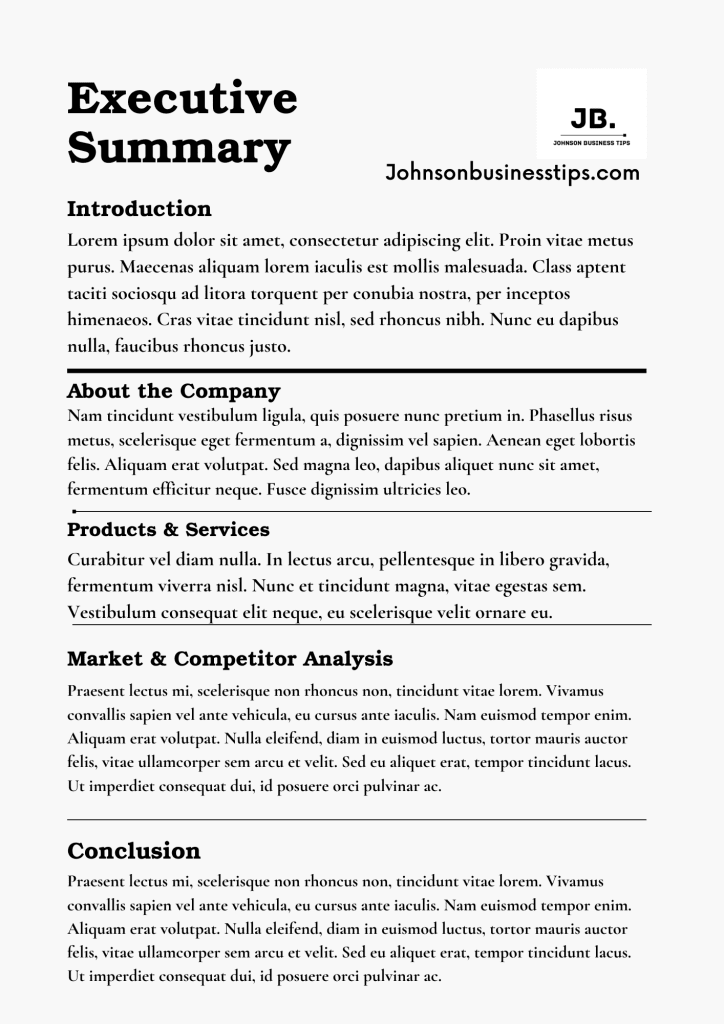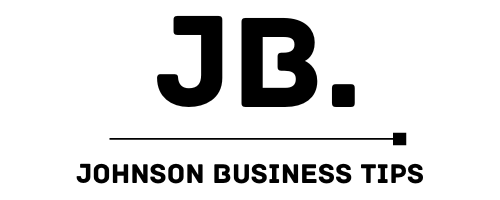
If you need funds to start a business, then I believe this blog post is going to be of great use to you. Below is the step-by-step guide on how to write a business plan for a loan. Bank loans are one of the guaranteed ways of getting the required fund that is needed for a business. Most people may ask, Why do banks or lenders request a business plan for a loan? Banks are interested in knowing that your business idea will be profitable and sustained for this reason. They consider all factors, such as financial documents, sales tactics, and your entire financial strategy, to see whether it is viable.
To boost the possibility of being granted a business loan, you can tender a business plan to lenders. This shows that your company deserves to be invested in. Lenders always demand a business plan and other paperwork when you apply for a loan. A great business plan is informative, practical, short, and, above all, convinces banks or individuals that lending to your company is a wise decision. Here are the essential details about each element of a business plan and how to draft one that will win a lender’s endorsement.
So let’s dive right into it!
Table of Contents
How to Write a Business Plan For a Loan That Will Get Approved
Composing a business plan for a loan has advantages you’ll benefit from as a business owner besides loan officials, who should be able to understand it. A well-written business plan acts as a road map for your enterprise. These are the major parts that a business plan should have.
1. Title Page
This page in your business plan is necessary because it summarizes your business legal details, including your business name, address, mobile phone number, business email address, and business logo.
2. Executive Summary

The executive summary is a crucial component, considering it is the first thing investors and banks see as they examine the business plan. Executive summaries are included at the start of business documents so that busy readers may access the main points of a longer document. Important information should not feel like it requires the reader to slog through a lengthy document.
The executive summary summarizes the business, its products, and the motivation for starting it. Include your major rivals and the reasons your product will prevail over theirs.
It must be concise and straightforward, and it must grab the interest of the reader. The executive summary needs to be only two pages long.
3. Business Description
In the business description, include the common facts of your business, such as:
- The size of your business.
- The duration of operation of your company.
- Your business structure (such as Sole proprietorship, partnership, corporation, or limited liability company [LLC])
- Discuss your team’s specializations and any competitive edge you may have. You can also enter specific information about your company, such as the nature of its business entity, and its background.
Future company ideas should also be discussed in this section. If you have any plans to grow, how will you achieve it? Who are your primary rivals and how are you standing out from them? What adjustments will you be doing to outperform them?
This part of your business plan should be brief.
4. The Experience of Your Team
This part of the business plan showcases the skills, expertise, competence, and qualification of your team members. Your lender or investor must be confident that they’ve got what it takes to complete the project you have in mind.
5. Get Your Company’s Product or Service Description
In this section, you have to give an overview of what you offer and why, as well as how clients are going to profit from using them. Include any supplies or machinery required for delivering the services or products you offer; this is especially useful if your business is searching for machinery. Of course, this section will differ substantially based on what kind of business you have. Business plans frequently list all of their products together with their anticipated or existing prices.
You ought to mention any intellectual property you may have in this section as well.
6. Put Your Business Market and Sales Strategy in the Business Plan
This section should consist of the following:
How are customers or clients going to find and purchase your products or service?
The stages of your driving sales
What strategy will you use to grow your company?
This part is supposed to, at the very least, outline your sales target and the strategies you intend to use to reach them, demonstrating to potential lenders how you intend to generate revenue to pay off any debt you may incur.
7. Industrial Analysis
You should provide details about your sector’s overall economy in the sector’s or an assessment of the market.
Which are your field’s strong points and weaknesses?
In what ways does your business plan stand out?
What industrial factors influence the profitability or possible difficulties of the sector in the years to come?
You can also provide details about your particular market segment. Make sure to draw attention to any extremely particular areas of the industry where your business operates.
8. Market Analysis
In this section, you can add include information about the audience you are targeting, such as the places you’ll look for clients, the methods you’ll use to sell to them, and the means through which the items or services you sell will be made available to them.
The goal of a market analysis is to provide specific information on the market segment that a company is trying to target. For instance, companies that offer tools may target customers with technicians and engineers.
Also in this section, you should put how you are unique from your rivals and the pricing strategy you’ll use to dominate the competitive field.
9. Financial Projections
This is the major thing any lender would look for in a business plan when you wish to apply for a loan. The lending organization analyzes your financial standards when deciding to lend to your business.
Your financial projections comprise your sales forecasts, profit and loss statements, and cash flow projections relevant to your industry. If you are a starter company without a lot of previous data to offer, give an estimate of your expenses, earnings, and any additional future forecasts you may have. In this case, graphs and charts might be helpful visual assistance. Generally, the more documentation you have to support your ability to repay a lender, the higher the rate of getting the loan.
10. Funding Request
After writing your business financial projection, you’ll need to write your funding request. It’s finally time to make your financing request! You must thoroughly detail why you are asking for business financial support, what amount you’ll be demanding, the intended use of the funds, and your repayment strategy.
Here is an example of how you could format your funding request:
current financial requirements.
What you plan to do with the money you get.
11. Appendix
The appendix area can then be written if additional information and documents are required. Your business plan appendix should consist of the following:
Sales forecast.
Legal documents of your business.
Resumes and permits.
Marketing materials.
letters of recommendation.
necessary certificates.
Tips For Boosting Your Chance of Getting a Business Loan
You must understand precisely what details your lender is searching for and where to obtain them to have an effective company strategy and loan request.
Make sure to thoroughly revise and modify your application for mistakes before submitting it.
Analyses of the market, in-depth financials, and other critical data should all be included.
Please double-check that you gather all the required paperwork before submitting it since your lending official will thoroughly review any errors or omissions.
READ ALSO
- How to Start a Tailoring Business
- Most Profitable Agriculture Business Ideas
- Most Profitable Rental Business Ideas
- How to Start a Laundromat Business With No Money
- Best Kidswear Business Ideas to Start Today
- Best Online Business That Pays Daily
- How To Become a Distributor of Products
- How to Build a Scalable Business
- Business Failure Definition
- Best Online Business To Start With No Money
Conclusion
We’ve come to the end of the post. One of the critical and required steps in obtaining a loan as capital is to write a comprehensive business plan. If you employ the aforementioned business plan template we’ve included, you can present your lender with all the details they require to make a well-informed decision. Following the procedures indicated above and supplying the required paperwork should considerably increase your chances of getting a loan for the business you are running.
FAQs
Business Loan Definition
A loan that is expressly designed for business needs is known as a business loan. It entails the formation of a debt, similar to all loans, that must be repaid with additional interest.
What are examples of business loans?
1. Term Loans
2. Short-term Loans
3. Startup Loans
4. Business Lines of Credit
5. Micro Loans
6. Commercial Real Estate Loans
7. Personal Loans
What are the two most common types of loans?
The two common types of loans are mortgages and personal loans.
What type of loan requires collateral?
The loans that need collaterals are Secured loans.
What is the formula for calculating loan interest?
Loan interest is equal to P * r / N. where P stands for Principal Outstanding. r = Interest Rate. N stands for the annual number of payments made periodically.
Why do lenders request a business plan during loan funding?
A solid business plan helps lenders figure out your business’s sustainability, financial projections, and the intended use of the loan.
Who can guide me when writing my business plan?
A business and financial professional can guide you throughout the entire procedure of writing a business plan.
A business plan should have how many pages?
A good business plan should have 15 to 20 pages.
What occurs if a business plan is missing?
Due to a lack of necessary documents and business information, it may result in the loan application being denied.
What is the key component of a business plan?
Undoubtedly, the most significant part of the business plan is the executive summary.
What aspects do banks take into account before making a loan?
The following lists are factors banks take into account before giving out a business loan.
1. Credit Reports.
2. Money Flow.
3. Collateral.
4. Repayment Potential.
5. Legal paperwork.
What are the three basic components of a loan?
Principal: This represents the initial sum that was borrowed.
The time frame within which the borrower must repay the debt.
The annual percentage rate (APR), which is the standard unit of measurement for interest rate, indicates the rate at which the sum of money owing grows.
Hi, I am Johnson Uche. I am a content creator and digital marketer who provides tips, and reviews to help you in your business journey.








3 Comments